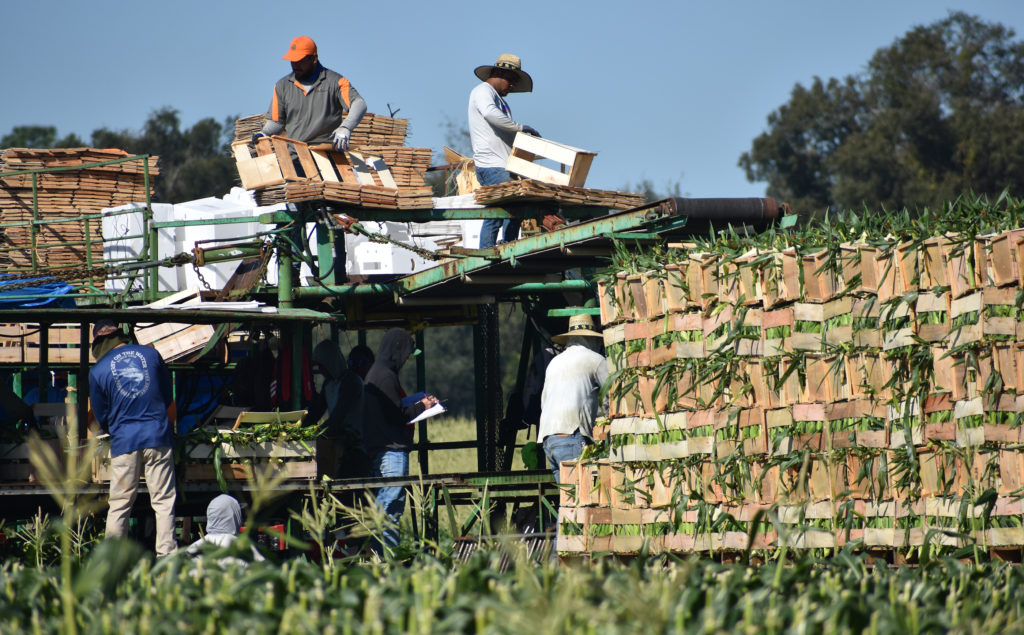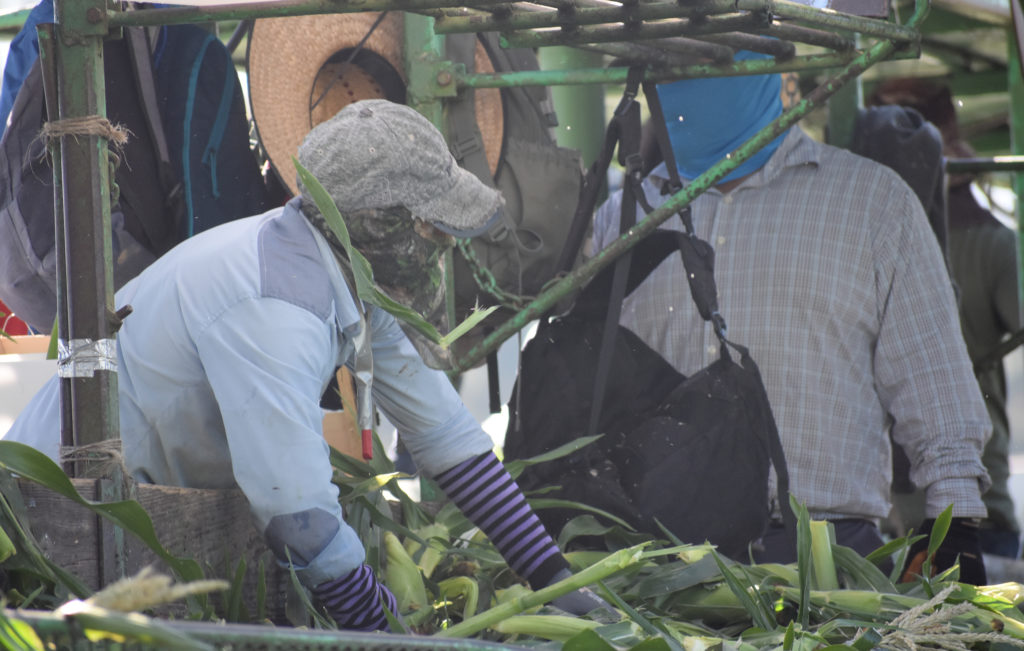
By Clint Thompson
The most significant challenge to sweet corn production isn’t disease or pest pressure or water requirement, says one Georgia/Florida producer. It is finding and utilizing a labor workforce to pick the crop, says Karla Thompson with JET Farms.
She and her family’s business utilize the H-2A program to find nearly 250 workers every year for their fall and spring sweet corn crop.
“All of our sweet corn is hand harvested for a variety of reasons. It’s better for quality. It has to be hand packed anyway with the way that we’re selling it. Hand harvests makes sense, but it takes a lot of people,” Thompson said.

“We’ve pretty much gotten to the point where we can’t harvest if we don’t have H-2A crews. But with that said, the regulatory landscape on H-2A is really intense. I’m a lawyer, and you kind of have to be in order to deal with the H-2A program. Even if you are coming at it with the best intentions to really honor your workers and do everything right, the legal scheme is so complicated that you could step out of line without even meaning to.”
Cost Prohibitive?
The costs associated with H-2A almost become cost prohibitive in using the program to begin with. Producers have to pay for their transportation, housing and the wage rate for doing the job they are contracted for. It has a trickle-down effect on a company’s domestic workforce as well.

“If we have H-2A workers performing the same jobs as our full-time domestic employees, our domestic employees have to be paid the same amount or more. If the H-2A wage goes up, then so too does the domestic rate,” Thompson said. “It can be someone that just got on a tractor for the very first time and they are making the same amount as a skilled laborer.”
Jet Farms produces a sweet corn crop in the spring and fall in South Georgia and South Florida. It utilizes three crews between the two regions in the spring, equating to about 150 workers and one crew in each region in the fall, about 100 workers.
Farm Workforce Modernization Act
Thompson hopes that many of H-2A’s flaws can be fixed with the Farm Workforce Modernization Act. Her main concern is there’s an unpredictability factor that growers can’t account for from year to year. The passage of this bill would provide growers a potential solution.
“If it could pass, then it could stabilize that wage rate so we would know what we were getting. It would prevent the big jumps from year to year. It would also allow H-2A workers be able to stay from contract to contract more easily. Right now, when the contracts with a particular farmer are over, they may have to go back home. There’s probably a lot of people that would love to have them work for them, and a worker probably wants to stay anyway,” said Thompson, who admitted the topic has spiraled into a political issue.
“(Legislative leaders) have so many different voices in their ear. They can tend to be directed in one direction to where they might think this act is only about immigration. But the farmer might say it’s not just about immigration. It is a labor issue. It’s a financial issue.”









